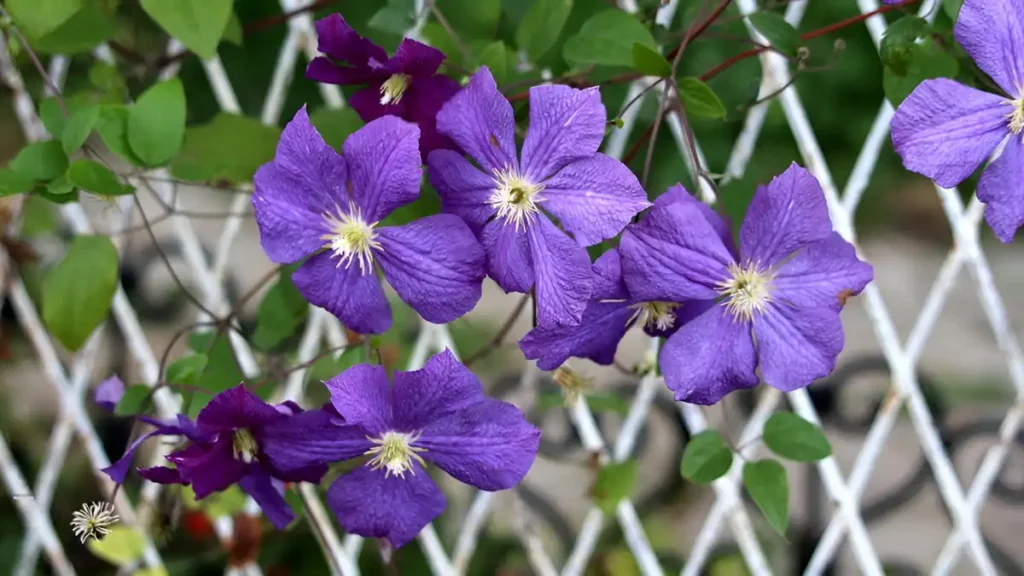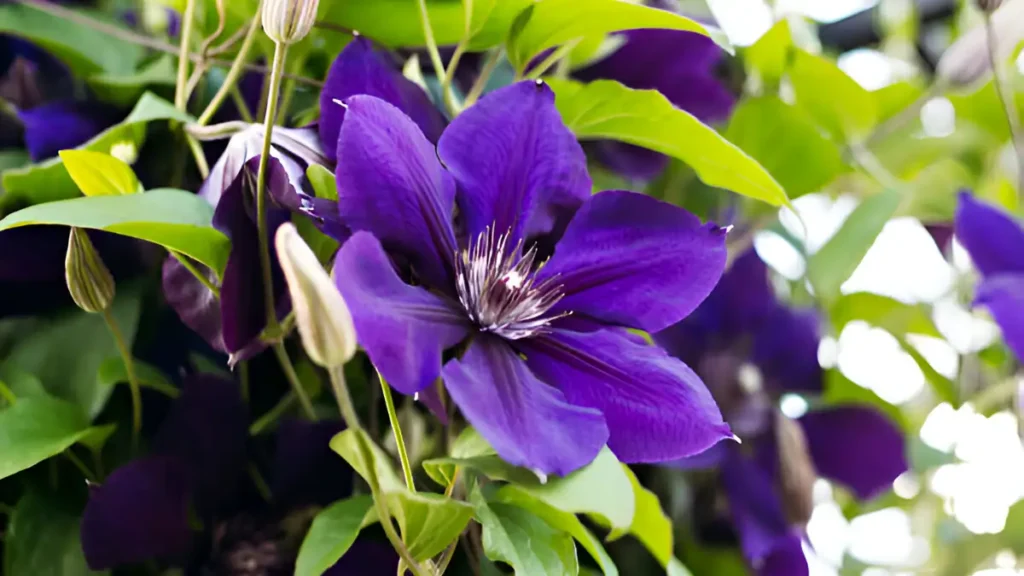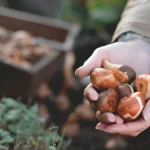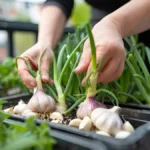Known as the “Queen of Climbers,” clematis is a beautiful and adaptable plant that can lend an air of refinement to any garden. Clematis, a plant with vivid blooms and fast growth, is found in several species and hybrids that give a wide range of hues, forms, and blooming periods. Whether you’re a rookie or an experienced gardener, this guide will provide you the know-how to make sure your clematis plant vines thrive and turn into a gorgeous focus point in your landscape.
How to take care of a clematis plant:
1. Sowing
- Select a spot with excellent air circulation and soil that drains properly. Clematis favors a location where its leaf can receive sun exposure while its roots remain cool.
- Rich, well-draining soil is ideal for clematis growth. Add organic stuff, such as compost, to the soil before planting.
- To promote robust root growth, plant clematis is a little deeper than it was in its nursery pot. This helps prevent the plant from stemming.
2. Watering
- Regular moisture is necessary for the clematis plant, especially in its first year of growth. Water deeply to make sure the roots receive enough moisture.
- To keep the roots cool and maintain moisture, mulch the area surrounding the base of the plant.
3. Process of fertilization for the clematis plant
- In early spring, use a balanced fertilizer (10-10-10) to encourage robust growth and a profusion of blossoms. During the growing season, give extra feedings as needed.
- When feeding your clematis, think about using organic fertilizers like fish emulsion or compost tea for a more organic method.
4. Clematis plant pruning
- If necessary, softly prune after flowering.
- Remove weak or dead stems by pruning in late winter or early spring. After the first flush of flowers, modest pruning can encourage a second bloom.
- In late winter or early spring, trim all of the stems down to a height of about 12 inches above the ground.

5. Instruction and support
- Plant young vines on supports to create a canopy.
- Tie new growth as soon as it emerges to shield it from wind damage.
6. Typical Problems and their fixes
- Dieback from clematis wilt can occur suddenly. Make sure there is adequate airflow and refrain from watering from above to stop this.
- Be wary of pests such as snails and aphids. If necessary, apply the proper chemical or organic controls.
- Watch out for fungal infections such as powdery mildew. Good air circulation and appropriate spacing can help avert these problems.
7. Winter maintenance
- In late autumn, cover deeply to shield roots from cold temperatures.
- Consider adding extra protection, such as burlap coverings, in colder climates.
Conclusion:
Clematis plant may contribute gorgeous blossoms to your yard and improve your outdoor environment when given the proper care and attention. You’ll have no trouble growing strong, colorful clematis vines that will bear fruit for many years if you follow this guide. Cheers to your successful gardening!
Certainly! If you’d like to learn more, please consider following our WhatsApp Channel: Harvest Gardening
A frequently asked questions:
Q1: When is the best time to prune clematis plant?
A1: Clematis plants should be pruned according to when they flower. While late-flowering kinds should be clipped in the early spring before new growth begins, early-flowering cultivars should be pruned following their blooming period.
Q2: What should I do if my clematis plant is not flowering?
A2: Make sure your clematis plant is getting enough sunlight and nutrition if it isn’t blooming. Make sure you are trimming by the requirements of the particular variety, as pruning at the incorrect time can also impair blooming.
Q3: What is a clematis plant?
A3: Clematis plants are blooming vines that are prized for their vivid, enormous blooms and diverse range of varieties. They are frequently used as vertical garden décor on walls, fences, and trellises. It grows well in soil that drains well and receives lots of sunlight.



